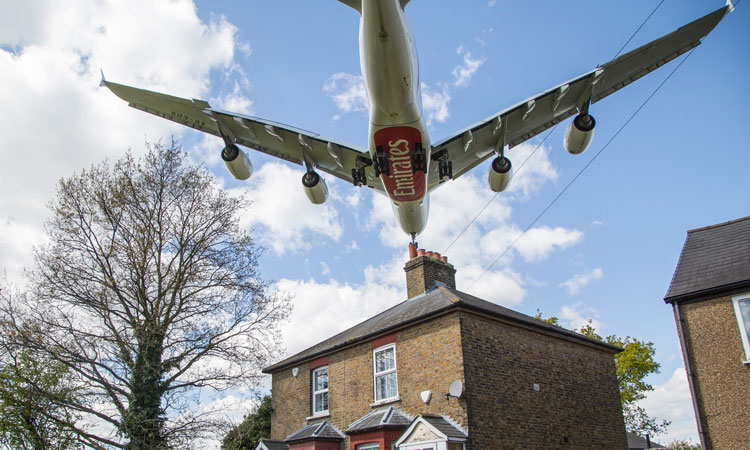Approaching noise management with new methods
- Like
- Digg
- Del
- Tumblr
- VKontakte
- Buffer
- Love This
- Odnoklassniki
- Meneame
- Blogger
- Amazon
- Yahoo Mail
- Gmail
- AOL
- Newsvine
- HackerNews
- Evernote
- MySpace
- Mail.ru
- Viadeo
- Line
- Comments
- Yummly
- SMS
- Viber
- Telegram
- Subscribe
- Skype
- Facebook Messenger
- Kakao
- LiveJournal
- Yammer
- Edgar
- Fintel
- Mix
- Instapaper
- Copy Link
Posted: 12 December 2019 | Marius Nicolescu - Airport Regions Council | No comments yet
Today, we consider annoyance as the most obvious reaction to aviation noise, says Marius Nicolescu, Secretary General of Airport Regions Council. With the clear indication that air travel is continuing to rise, global passenger numbers expected to double by 2037 and communities becoming more vocal about noise impact, airports need to continue putting noise mitigation at the centre of their strategies.


ANIMA (Aviation Noise Impact Management through novel Approaches) is an EU Horizon 2020-funded research and innovation project striving into the dissemination and enhancement of best practice in noise impact mitigation across EU Member States.
The objective of this project is to develop new methodologies, approaches and tools to manage and mitigate the impact of aviation noise; enhancing the capability of the aviation systems to respond to the growing traffic demands. ANIMA is different from other projects in that it does not try to mitigate noise generation at the source, but examines how the impact is perceived by people on the ground.
How noise impacts people’s lives
Airports have both social and economic impacts on the communities surrounding them. For passengers, airports are the symbol of inter-regional and global connectivity. For nearby residents, however, an airport may threaten their quality of life. Noise is one of the most important concerns of residents.
However, it is not just acoustical factors that contribute to aircraft noise annoyance. Much of it is attributed to non-acoustical factors, for instance attitude towards aviation and perceived procedural fairness, or social variables.
A central component of the ANIMA project is looking at how these non-acoustical factors can be taken into account when designing intervention methods for airport noise.
Community engagement and empowerment is key
With the understanding that there are methods outside of direct noise reduction that can mitigate some of the adverse effects of noise, the ANIMA project is looking at which factors are most crucial. One of the most important is enhanced communication and engagement with affected communities.
The project looked at how communication should be underpinned by a fair ‘common language’ that is comprehensible for all; access to expertise and underlying data should be available to all; and decision-making processes should be inclusive, transparent and allow the validity of claims to be challenged.
Airports are undertaking a range of engagement activities with local communities and this type of engagement is on the rise, particularly at larger airports or airports that are constrained by noise. Engagement programmes can range from simply making noise data and management information available on airport websites, to dialogue forums that actively work with the airport and can influence decision-making.
If participation is to be secured and meaningful (and thus likely to influence attitudes and perception of trust) then communication and engagement should relate to issues that affect the quality of life.
That is not an easy task, as it implies airports must accept to provide comprehensive and comprehensible information to reach an actual consensus on the best (or least bad) solution. This also implies that they should eventually be ready to make changes in accordance to the consensus reached.
Rapidly-growing airports can be at the forefront
Small airports are catching up with new approaches to noise mitigation. They show an increasingly strong commitment to noise management, with specific focus on land-use planning. Stopping encroachment of noise sensitive developments is just one of the ways in which airports can grow.
Meanwhile, in rapidly-growing airports, citizens are quickly becoming aware of airport noise impacts. Engaging as early as possible with such communities, in an open and transparent fashion, is the best way to establish trust.
By considering the adoption of balanced approach interventions before noise becomes a constraint, airports will be better placed to manage their future.
Through being pro-active and developing long-term noise management strategies, rapidly-growing airports will be able to better control the ongoing development on their own terms, with consensual support of neighbouring populations, helping to shape future policy rather than being at the behest of policy decisions made by others.
Land-use planning is perhaps the best way through which this can be done. For instance, if rapidly-growing airports are able to develop long-term noise maps based on future growth, they will be able to resist the encroachment of noise sensitive buildings such as public residences, thus leading to fewer noise problems in the longer term.
What tools are available and what is ANIMA doing
ANIMA is already developing some tools it believes will be useful for airports and local authorities in terms of noise mitigation. These include a best practice portal (BPP) for airports and local authorities to be guided through the types of interventions they can make to mitigate specific noise issues, which will be available online in 2020. Ultimately, the BPP – built on the sound experience of a wide set of stakeholders – will provide guidance to categories of unexperienced end users on what they could and should avoid.
ANIMA is also developing a virtual community tool (VCT) for professional users. Within this tool, these end users will be allowed to check the noise impact of local air traffic through non-acoustical descriptors in addition to basic intensity-based noise maps, with the offered possibility to add their own local descriptors.
Various activities are therefore led in order to feed these two top-level deliverables that are the BPP and the VCT. For instance, focus groups and online surveys are held for areas close to four different airports in order to gain better insight into their communication campaigns; noise simulations will be developed, using a virtual-reality headset to help better understand how visual factors may alter the perceived noise; and a mobile application is tested to gather the disturbance and attitudes of residents near an airport.
Further developments
Currently, ANIMA is looking for partnering airports and local authorities to test and exemplify developed tools. These sought partners would be encouraged to review the BPP, the validity of recommendations and guidance, and the way they are distilled. Similarly, they could fruitfully test the VCT by embedding annoyance-related indicators and importing their own indicators within.
Biography
Maruis Nicolescu is the Secretary General of Airport Regions Council and the Communication and Dissemination Work Package leader of the ANIMA project.
Issue
Related topics
Air traffic control/management (ATC/ATM), Augmented reality (AR)/ Virtual reality (VR), Noise abatement, Regulation and Legislation, Sustainability


















